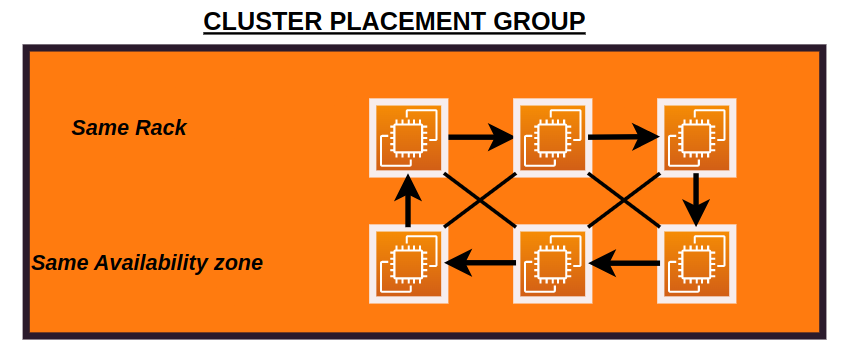Getting to grips with AWS EC2 Placement Groups
Maximizing Performance and Efficiency for your EC2 Infrastructure
Last week, we delved into the details of IP addressing in AWS, exploring Public IP, Private IP, and Elastic IPs. Today, we'll shift our focus to AWS EC2 Placement Groups and their role in maximizing the performance and efficiency of your EC2 instances.
Understanding Placement Groups
A placement group is a logical grouping of EC2 instances within a single Availability Zone (AZ). AWS offers three types of placement groups - cluster, partition, and spread - each with unique characteristics and use cases.
1.Cluster Placement Groups
Cluster Placement Groups are ideal for workloads that require high network throughput or low network latency. Instances within a cluster placement group are located in a single AZ, allowing them to benefit from low network latency and high network throughput.
2. Partition Placement Groups
Partition Placement Groups are designed for large distributed and replicated workloads. Each partition within a group has its own set of racks, and each rack has its own network and power source. This design ensures that a failure in one partition does not impact instances in other partitions.
3. Spread Placement Groups
Spread Placement Groups are designed for workloads that require a small number of critical instances to be distributed across distinct underlying hardware to reduce correlated failures. Each instance in a spread placement group is placed on separate underlying hardware.
Benefits of Using Placement Groups
Placement Groups provide several benefits for AWS EC2 users:
Higher performance: Cluster placement groups offer high network throughput and low latency, making them ideal for compute and memory-intensive workloads.
Increased fault tolerance: Partition and spread placement groups reduce the risk of simultaneous failures that could impact your application.
Greater control over instance placement: Placement groups offer granular control over the placement of instances, enabling you to optimize for performance, resilience, or both.
Best Practices for Using Placement Groups
Here are a few best practices for using placement groups in AWS EC2:
Use cluster placement groups for high-performance computing (HPC) applications or applications that need low-latency network performance.
Use partition placement groups for large distributed and replicated workloads, such as Hadoop or Cassandra.
Use spread placement groups for applications that need to maximize availability and minimize correlated failures.
Launch all instances within a placement group at the same time to help AWS accommodate the needs of the placement group.
Consider the limits of placement groups (i.e., the maximum number of instances you can launch in a single placement group) when planning your deployments.
Understanding AWS EC2 Placement Groups is key to optimizing the performance and efficiency of your EC2 instances. By choosing the right type of placement group for your workloads, you can achieve higher performance, increased fault tolerance, and greater control over instance placement. Join us in our next blog post, where we'll discuss EC2 Elastic Network Interfaces (ENIs) and their significance in network management for your instances. Stay tuned!




